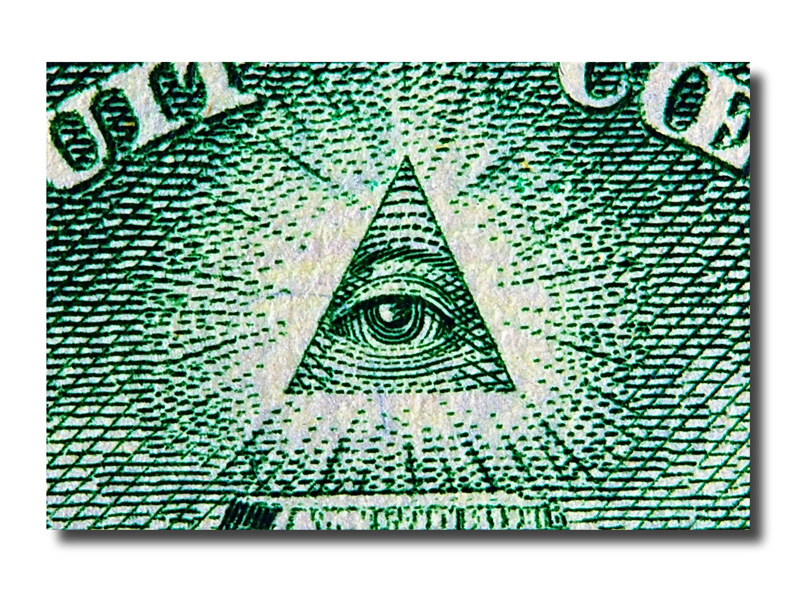Do you have a dollar bill at hand? If so, take it out and look, for a moment, at the back side of the bill. There, to the left of the word “ONE”, is a circle inside of which sits a pyramid, capped by an “all-seeing eye”. Wikipedia tells us that this is “the Eye of Providence (or the all-seeing eye of God) [...] a symbol showing an eye often surrounded by rays of light or a glory and usually enclosed by a triangle.[...]In the modern era, the most notable depiction of the eye is the reverse of the Great Seal of the United States, which appears on the United States one-dollar bill.”
We may not believe in the All-Seeing Eye of God but there can be no doubt but that we are being watched, virtually all the time and everywhere...from the traffic cams that can spot us running red lights, to the security cameras that helped identify the Boston Marathon bombers, to the cell-phone camera that, in early April, caught a South Carolina policeman in the act of murdering an unarmed African-American man. In our very own congregation, security-camera footage recently helped us solve the mystery of who went home with the wrong coat (with valuable car keys in its pocket) after our temple seder! [Stay tuned for CSI: Falmouth Jewish Congregation Unit!]
Like every technological advance our society has encountered, from the telegraph to the telephone, to personal computers to smart phones, the ubiquity of devices that can secretly record our actions brings a host of benefits and detriments. We can no longer assume that what we do, where we go and with whom we associate when we leave our home in the morning will escape public scrutiny. Small-town life doesn’t insulate us from such phenomena. In January of this year our town’s police department secured an $86,000 grant to purchase a sophisticated mobile surveillance camera-unit.
We are painfully aware of the ways in which cell-phone and personal video cameras have documented terrible instances of abuse by police officers, leading increasing numbers of police departments to require that officers wear “body cams”. Departments that have adopted such policies have seen dramatic reductions in the number of claims of police brutality as well as a drop in the number of civilians injured by police. In Texas, recently, legislation was introduced that would make it a crime to take a video within 25-feet of a police officer, an alarming backlash to the growing number of incidents of questionable police behavior captured on video by civilians.
This “optical genie” is out of the bottle, never to be put back inside. The challenge, for all of us, is to help shape rational policies about surveillance that strike the necessary balance between legitimate security needs and the right to privacy. We welcome technology that helps us feel more safe and which helps solves crimes; we are understandably concerned about that same technology when it threatens to breach the barrier that surrounds our reasonable expectations of privacy.
Reb Elias



